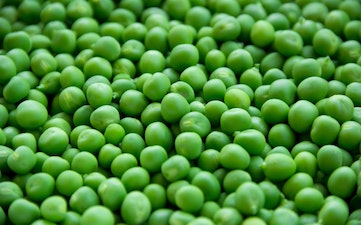
In the food sector, plant proteins are widely used both in conventional and in organic markets. Although animal protein consumption is increasing at global level, the EU is seeing the emergence of low animal protein diets. Recent changes across some EU countries suggest the beginning of a shift back towards plants and to less meat protein consumption, stemming from health concerns, economics, and consumer choice. For a deeper insight into the main food market segments for Protein-Rich Plants or crops (PRPs,) please refer to the EU report on “Market developments and policy evaluation aspects of the plant protein sector in the EU”.
This month, we have attended the third edition of the Food Valley Summit in Wageningen where experts discussed solutions for the protein transition. According to the Wageningen University & Research, there are four key drivers for the protein shift:
- The environmental impact reduction (agriculture systems need to shift towards sustainable nutritional sources as the current food production chain, among others, is responsible for more than 25% of global greenhouse gasses)
- Zero hunger for the growing population (the global protein demand will increase by 30-50% by 2050, so more equitable food systems are required to prevent increasing hunger and malnutrition)
- Resilient production systems (with increased impact on climate change, food scarcity will put more pressure on already fragile areas, thus resilient protein systems are urgently needed to support these fragile areas)
- Public health (the animal protein content in western diets has dramatically increased in the last decades, leading to an increase of chronic-disease mortality)
There is consensus that, to achieve a true change on the current protein paradigm, several aspects have to come together:
- technology (e.g. improve crop production by optimizing their protein yield or by using innovative aquatic productions systems)
- production (e.g. by reducing food loss and waste, transformation of side streams into microbial or insect protein, or use of nitrogen-fixing crops like chickpeas)
- consumption development (e.g. introduction of new protein sources, e.g. from protein-rich plants, aquatic plants, algae, or fungi, and last but not least insects)
Developing new sources of protein that have not been consumed by humans in the EU prior to May 15, 1997, will raise the question whether these proteins might fall under the Novel Food Regulation. Even protein isolates from established food sources might be considered novel and require a pre-market authorization. Of course, this is also true for any up-cycled side streams of food production for human consumption.
a&r has been very active in the field of alternative food sources such as plant proteins. Our food experts would be happy to support you bringing your new plant protein sources to the market. Get in touch with us if you have any questions!
